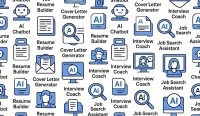Amazon, Microsoft, Meta, Salesforce, and others have cut tens of thousands of roles since 2023—sometimes invoking AI. Yet AI leaders themselves argue layoffs mostly reflect a long‑overdue correction after the COVID hiring binge. So which is it?
Short answer: both. AI is real, but it’s not the only (or primary) driver today. Layoffs spring from three overlapping forces: post‑pandemic overcapacity, higher productivity expectations, and classic margin discipline into year‑end. AI accelerates all three.
What’s Actually Driving Cuts Now
1) Post‑COVID overhiring unwinds.
From 2020–2022, tech hired ahead of demand. As growth normalized, headcount did not. 2025 reductions right‑size teams to realistic run‑rates.
2) Productivity mandate.
Valuations priced in remarkable productivity gains from AI. Boards expect more output per employee. Even before full automation, “AI‑adjacent” reorganizations raise bars and compress layers.
3) Margin optics and capital reallocation.
Companies are shifting spend from headcount to capex/opex for data centers, chips, and model integration. Cutting SG&A lifts near‑term margins while freeing cash for AI infrastructure.
Where AI Is Truly Replacing Work (And Where It Isn’t—Yet)
Real displacement (today):
- Repetitive analysis and reporting, first‑draft content, tier‑1 support, basic testing, ad ops, some sales ops—especially where structured data and clear guardrails exist.
Augmentation > replacement (today):
- Software engineering, design, finance, legal, security, and PM work. AI removes grunt tasks (scaffolding code, redlines, reconciliations), but human review and context stay essential.
Not ready for prime time (today):
- High‑stakes decisions, novel R&D, ambiguous product strategy, safety‑critical systems. Models help, but accountability remains human.
Why Firms Say “AI” (Even When It’s Mostly Not)
- Narrative cover. “AI transformation” sounds better than “we overhired.”
- Investor alignment. Markets reward productivity narratives and lower unit costs.
- Internal leverage. AI programs justify reorganizations executives wanted anyway (layer compression, shared services, vendor consolidation).
The Rotation: From Payroll To Platforms
Follow the money:
- Headcount down; AI capex/opex up (chips, cloud, data contracts, tooling).
- Vendor mix shifts to hyperscalers and AI platforms; internal tools consolidate.
- More contractors/partners for peak demand; fewer permanent roles.
This isn’t purely cost cutting—it’s balance‑sheet reshaping. Labor costs become compute plus a smaller, higher‑leverage workforce.
The Rotation: From Payroll To Platforms
The shift is structural, not cyclical. Payrolls shrink while platform spend accelerates — AI infrastructure, cloud capacity, and data tooling replace headcount as the new productivity drivers. Labor becomes leverage: fewer full-time employees, more compute, and higher ROI per role. The modern enterprise is being rebuilt on scalable intelligence.
Post Jobs & Build AI-Driven Teams →What It Means For Workers
- The bar is higher. Same job title, more output. AI skills are the new Excel—table stakes, not a niche.
- Titles compress, scopes expand. Mid‑layers shrink; top performers cover more surface area with agents and automation.
- New roles emerge. Applied ML, data engineering, prompt/tooling ops, evaluation, governance, and AI product ownership grow—even as generic roles decline.
What It Means For Investors
- Expect lumpy headcount cuts around quarter‑ends; capex spikes into data center build‑outs; margin beats from SG&A.
- Winners: AI infrastructure (chips, power, cooling), data platforms, domain software that embeds AI to deliver measurable business outcomes.
- Losers: labor‑intensive services without proprietary data or defensible workflows.
How To Stay Off The Layoff List
1) Tie your work to money. Show revenue lift, cost out, risk down—preferably with metrics.
2) Become the AI multiplier. Demonstrate domain‑specific workflows where AI saves hours or raises quality—and teach others.
3) Ship faster with guardrails. Automate the boring; document the controls. Reliability beats raw speed.
4) Own scarce assets. Data quality, customer relationships, and cross‑functional execution are harder to replace than tasks.
FAQs
Are “AI layoffs” mostly PR?
Partly. AI gives cover to cuts driven by overcapacity and margin targets. But genuine task displacement is real in repeatable, rules‑based work.
Will AI create more jobs than it destroys?
Historically, yes over time. Near‑term, expect a net decline in generic roles and growth in applied AI, data, and domain‑plus‑AI positions.
What skills matter most now?
Quantified business impact, secure/ethical AI use, data literacy, and the ability to redesign workflows—not just prompt writing.




